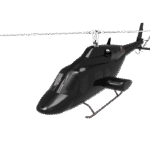CNC (computer numerical control) machining has revolutionized manufacturing, providing previously unimaginable precision and efficiency. As a beginner in the field of CNC machining, understanding the basic principles and practical skills required can have a significant impact on your journey to mastering this technology. This guide is designed to provide a comprehensive overview of CNC machining, including tips, techniques, and best practices to help you become a skilled CNC machinist.
Learn about CNC machining
What is CNC machining?
CNC machining is a method of using computer control to operate machine tools such as lathes, milling machines, and grinders. Unlike traditional machining methods that rely on manual adjustments, CNC machining relies on programmed commands that determine machine movements. This enables high precision and repeatability when producing complex parts.
The importance of CAD/CAM in CNC machining
One of the important components of CNC machining is computer-aided design (CAD) and computer-aided manufacturing (CAM). CAD software helps designers create 2D or 3D models of parts, and CAM software converts these designs into a series of commands that CNC machines can follow. For beginners who want to excel in CNC machining, understanding CAD and CAM software is crucial.
Getting Started with CNC Machining
Choose the right CNC machine tool
As a beginner, choosing the right CNC machine can be overwhelming considering the many options available. Factors to consider include the type of work you will be doing (wood, metal, plastic, etc.), the size and complexity of the components, and your budget. Popular CNC machine tool types include:
- 3-Axis CNC Milling Machine: 3-axis machines are great for beginners and can perform a variety of tasks, including milling, drilling, and engraving.
- CNC lathe: These machines are ideal for turning operations and can produce cylindrical objects with high precision.
- CNC milling machine: CNC mills are great for cutting softer materials like wood and plastic, and are commonly used in the woodworking and signmaking industries.
Basic tools and software
In addition to the CNC machine itself, having the right tools and software is critical to successful CNC machining:
- CAD/CAM software: Popular software options include Autodesk Fusion 360, SolidWorks and Mastercam, each offering a variety of features to streamline the design and machining process.
- Measuring tools: Calipers, micrometers, and height gauges are important to ensure measurement accuracy.
- Cutting tools: Understanding the different types of cutting tools and their applications (end mills, drills, and inserts) is critical to obtaining the results you want.
Basic technology of CNC machining
Learn about CNC programming
CNC programming is the core of CNC machining. Knowledge of G-code (the primary language of CNC machine tools) is essential for manipulating machine operations. G-code commands control everything from spindle speed to tool movement. For beginners, tutorials and guides are readily available to help understand the syntax and application of G-code.
Basic G-code commands
- G0 (quick positioning): Move the tool to the specified position at maximum speed.
- G1 (linear interpolation): Move the tool linearly to the specified position at the specified feed speed.
- G2/G3 (circular interpolation): G2 is used for clockwise arc, G3 is used for counterclockwise arc.
- M codes (miscellaneous functions): Controls non-motion related functions, such as starting or stopping the spindle.
Set up your CNC machine
Correct settings are critical to successful CNC machining. Here are some key steps:
- Machine calibration: Make sure the machine is properly calibrated and aligned to maintain accuracy.
- Tool settings: Install the correct cutting tool in the spindle and set the tool height accurately.
- Material placement: Firmly fix the workpiece to the machine bed to prevent movement during processing.
Best Practices for CNC Machining
Understanding and implementing best practices can greatly improve your processing efficiency and output quality.
1. Optimize tool paths
Efficient tool paths reduce machining time and tool wear. Before starting the machining process, use CAM software to analyze and optimize tool paths. Considerations include minimizing rapid movements and avoiding unnecessary withdrawals.
2. Maintenance of CNC machine tools
Regular maintenance of CNC machine tools is essential for extended service life and accurate performance. This includes lubricating moving parts, cleaning the machine after use, and regularly checking spindle alignment.
3. Understand cutting speed and feed
The speed at which a cutting tool moves through material affects cut quality and tool life. Be familiar with the optimal cutting speeds and feeds for different materials and cutting tools.
4. Monitor workpiece temperature
Excessive heat generated during machining can lead to tool wear and poor surface finish. Implement a cooling system or use cutting fluids to manage workpiece temperature and improve machining performance.
CNC machining advanced technology
As you become more familiar with basic CNC operations, you may consider using advanced techniques to expand your skills.
1. Multi-axis machining
Unlike traditional 3-axis machining, multi-axis CNC machines enable more complex geometries and designs. These include 4- and 5-axis machines that can rotate and tilt to increase flexibility and reduce setup time for complex parts.
2. High-speed processing
High-speed machining involves using higher spindle speeds and feed rates to increase productivity without sacrificing accuracy. This technique is especially useful for small, complex workpieces.
3. Tool path simulation
Before executing complex machining jobs, utilize simulation capabilities in CAM software to visualize the machining process and identify any potential collisions, errors or inefficiencies.
Safety Practices in CNC Machining
Safety is always the top priority in CNC machining. Please follow these basic safety guidelines to protect yourself and your machine:
- Wear personal protective equipment (PPE): Always wear safety glasses, gloves and ear protection when operating CNC machinery.
- Be aware of moving parts: Make sure loose clothing and accessories are securely secured to avoid becoming entangled with moving machinery.
- Keep work area clean: Keep your workspace organized to prevent accidents and improve work flow.
in conclusion
Embarking on the journey to mastering CNC machining may seem daunting, but with a deep understanding of fundamental principles, tools, and practices, beginners can quickly improve their skills. Continuous learning, practice, and a commitment to safety are essential to becoming an expert CNC machinist. By following the tips and techniques outlined in this guide, you’ll be well on your way to mastering CNC machining and making your mark in the manufacturing industry.
FAQ
What are the best CNC machines for beginners?
For beginners, 3-axis CNC milling machines or CNC milling machines are recommended because of their versatility and user-friendly interface.
How long does it take to learn CNC machining?
The time it takes to learn CNC machining varies based on your dedication and practice. Basic proficiency can be achieved in a few months, while mastering advanced techniques may take several years.
Do I need to learn G-code to use a CNC machine?
Although many modern CNC machine tools are equipped with user-friendly interfaces and software that abstracts G-code, a basic understanding of G-code is beneficial for troubleshooting and custom programming.
Can a CNC machine be used on both metal and wood?
Yes, many CNC machines can machine a variety of materials, including wood, metal, plastic, and composites. However, specific types of machines and tools need to be selected based on the materials being processed.
How important is machine maintenance?
Regular machine maintenance is essential to ensure accuracy, extend equipment life and prevent costly downtime.
By diligently following these insights and strategies, you will succeed in the rewarding field of CNC machining. Whether you’re manufacturing complex components for aerospace or building custom furniture, the skills you develop will be invaluable. Happy processing!
Daguang focuses on providing solutions such as precision CNC machining services (3-axis, 4-axis, 5-axis machining), CNC milling, 3D printing and rapid prototyping services.


















